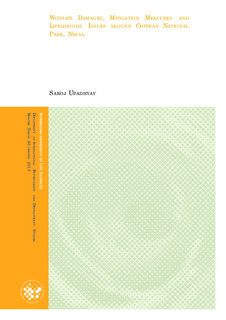| dc.description.abstract | Human-wildlife conflict is closely associated with the economics and social well being of the local people. It occurs worldwide and its frequency and severity have been rising annually, especially in Chitwan National Park. Crop damage and loss of livestock by wildlife from park are some of the major causes of park-people conflict in Chitwan National Park. In response to these damages, local people employ different defensive measures to alleviate the losses or reduce the risk of wildlife damages. Such measures often represent a significant investment in terms of money and time. Since these damages and mitigation measures can have a substantial impact on the local people, it becomes important to study what effect they have on the livelihood and wellbeing of the people living in the vicinity of the park. A questionnaire survey of 140 households was conducted in Meghauli and Bachhauli VDCs in buffer zone of Chitwan National Park. Sustainable livelihood framework provided by DFID was used to analyze how wildlife damage and mitigation costs affect income and livelihood of the local people with emphasis on equality and justice issues. Also, the factors affecting attitude of people towards the park, wildlife damages and mitigation measures were studied.
Diversified livelihood income, access to loan or credit facilities, services and infrastructures and high level of participation in buffer zone programs were some of the positive strategies or capitals that helped the households in achieving a sustainable livelihood. High inequality in income and wealth distribution and a lack of education and training especially among women and lower caste groups implied vulnerability in achieving both sustainable livelihood and mitigating wildlife damages. Wildlife damages were found to be responsible for creating a greater economic inequality. This was because people with less income and wealth faced more wildlife damages resulting in reduced food security and options for cash generation. The poorest face compounding vulnerability due to lost resources on wildlife damages and need to invest in mitigative measures further fostering poverty. Benefits as tourism and access to electricity is reaching only a certain fraction of communities while other groups of people are experiencing most of the costs associated with wildlife damages which is contributing to injustice. Tangible benefits as yearly grass cutting, park related income, tourism was found to be more influential in shaping peoples attitude towards the park than demographic and socio-economic factors. Hence, it is recommended that future policies should be adopted so that all get equal access to services and those policies should supplement livelihood strategies of the local people in dealing with wildlife damages especially the excluded groups and women. | no_NO |
